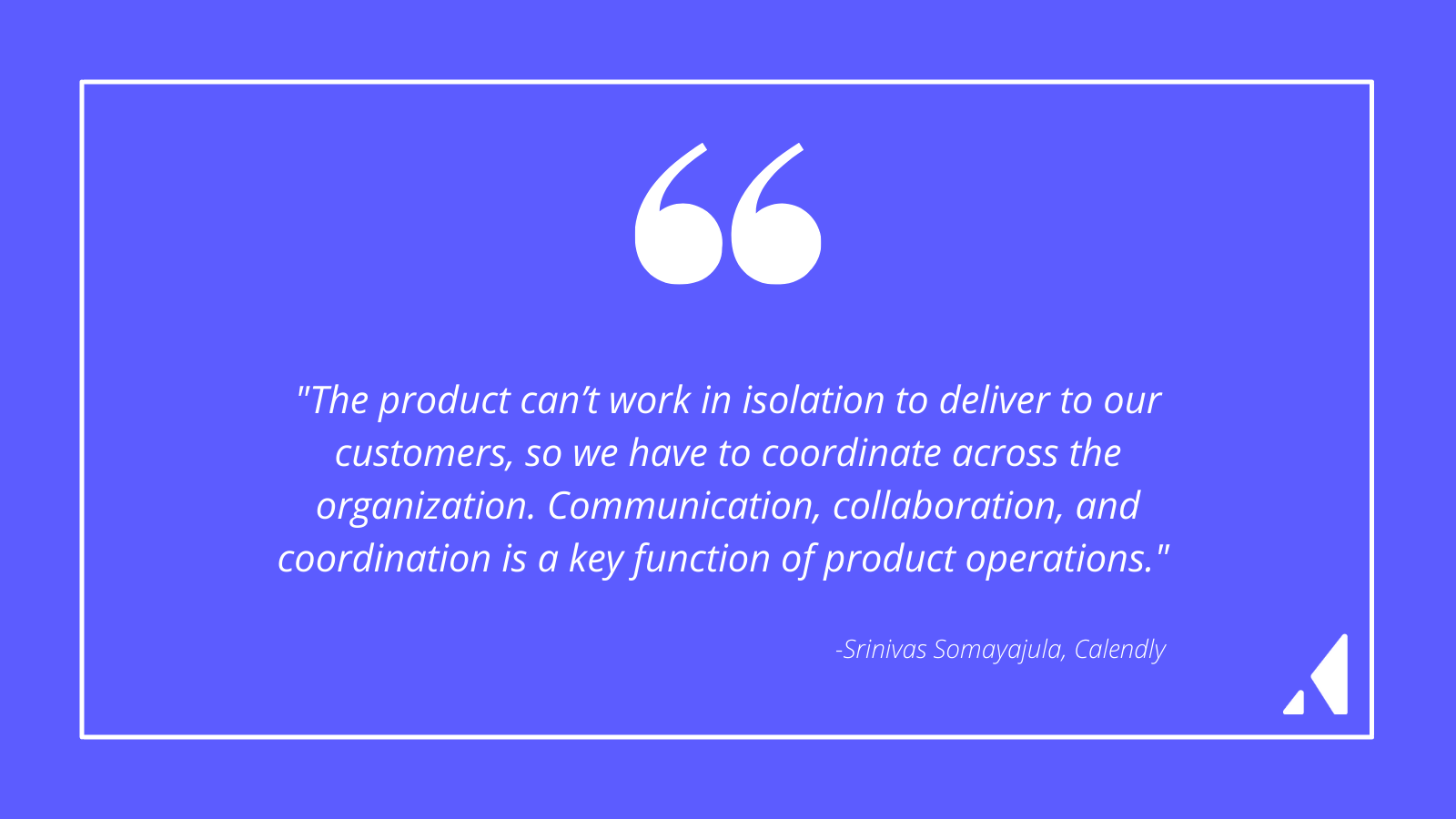What is product ops and does your team need it?

.png)

.png)
Product teams are often pulled in multiple directions. After all, you’re usually in the middle of a release cycle, planning for the next cycle (or two!) and pivoting when critical customer issues arise. Product management requires exceptional skills in time management, understanding the customer, and decision-making.
Not only that, but there are all of the details. From compiling data on customer requests to measuring results, your team can become torn between the big picture and day-to-day work. At the same time, keeping a firm grasp on both is how you’ll be able to scale a product team.
This is where product operations (also known as product ops) can come in. From everyday communication to tools to data collection, product ops can “make stuff happen” while product managers focus on the product’s direction.
But how can you know the right time to add product ops to your product team? We’re here to break it down and help you understand when to take that step and how your company might benefit from product ops.
Product managers focus on ideas and direction of the product, while product operations handle the tactics that support bringing those ideas to fruition.
Product ops—like everything with “ops” in its name—is a person or team to help your product managers function as efficiently as possible. They organize and apply processes to the delivery of the product and product information across departments. Srinivas Somayajula, Head of Product Ops at Calendly, describes the responsibilities of his team:

Product ops is an emerging trend in the product management sphere. As products are becoming more sophisticated and development is becoming more agile, product teams must have efficient and scalable processes to stay competitive. If the team is bogged down internally, it can slow the time to market or lead to bad product decisions.
In smaller organizations, the product manager and product ops are one and the same. As companies grow, gathering data, organizing it, and presenting it in a meaningful way—along with everything else that product managers do—can cross a threshold into overwhelming.
This is where product ops comes in. As an operational component, product ops removes knowledge gaps and bottlenecks between departments. Product ops also measures results and outcomes, keeping your product accountable to overall company goals.
Part of the decision to add product ops may be based on your team's size and personalities. Some product managers have a natural knack for the “process” part of the role. Other product managers may be fantastic in answering the “what comes next?” question but lack the organization to manage the details. In this case, it might make sense to split product managers and product operations into two different roles.
For example, product managers may consider an enhancement from customers, develop and release a new feature, only to learn that the customers were looking for something else—and that additional customer feedback would have helped. Product ops could have helped gather that feedback so that a better business decision could have been made.
If you decide to add product ops, you’ll want to clearly define the responsibilities of product ops versus your product managers. They should complement each other: product managers have the blueprint for a product, and product ops bring the tools and equipment to make it happen—as well as maintain the completed version.
If you’re writing a job description for product ops, what does that look like?

Below are some of the key responsibilities that you can use to distinguish product managers from product ops.
Product operations can become the “go-to” people for the product team by answering questions and ensuring every department has the product information it needs. This might include:
A lot of this list is tied to timing: if the team doesn’t make time to collaborate, each department suffers a little bit from not having the right details or input. When the product manager doesn’t have the bandwidth to make sure that this collaboration happens, product operations can step in and keep the information flowing.
More and more companies are using data to drive product decisions. After all, data gives you insights into your customers, such as how well they’re adopting new features, how many complete all stages of onboarding, and how different customer segments behave throughout the lifecycle journey. In-app surveys or “wish list” requests in customer tickets can help you consider new product features.
Data-driven decision-making is the future because your team can make more informed product decisions. However, collecting the data needed can be a tedious process—one that consumes a lot of time and requires attention to detail. Product operations can manage this process by gathering sources, organizing the data, and presenting the results.
As you roll out new features, you may conduct experiments within the product. These might take the form of A/B testing or working with a group of beta customers. Experimentation can prevent you from going down the wrong path, but it takes time to design. Your experiments should also be consistent among large product teams—from how they are conducted to how results are reported—so that they’re accurate and you can look for trends over time.
Adding product operations to conduct experiments frees up product managers to work on other projects while the experiments are being conducted. Product ops can establish best practices, manage the experiment within your customer base, and collect results.
As product teams grow, the need for automation and tools also grows. Too many disparate systems, or internal products not used effectively, can bog down teams. Of course, some product managers thrive on “anything that can make their lives easier,” so bringing in product ops can help when there are a lot of tools or complex workflows.
Product operations can be responsible for the internal tech stack, identifying the right tools, and outlining procedures. These tools can be anything from those that promote deep collaboration and streamlined communication to those used to track enhancements and bugs. Product ops would build an internal wiki or maintain a knowledge base around tools to keep the usage consistent.
With a focus on continuous improvement, product operations becomes the resource that identifies problems and recommends solutions. This could range from internal process issues to how you measure up to your KPIs. Product ops can strategize with product managers and other decision-makers, saying, “Here’s where we are today. And here’s how we can be better.”
Product ops should always have an eye on scalability, recognizing that the team’s needs will change as the organization expands. By staying current on trends in product management, product ops can plan for and avoid growing pains.
The last thing you want is to make your product management more complicated than it needs to be. Product operations can make things easier if the workload has hit that critical mass and your product managers are juggling too much. The key is keeping a pulse on the needs of your product team. If you understand how product ops can fit into your team, then you’ll better know when it might be time to make the change.
